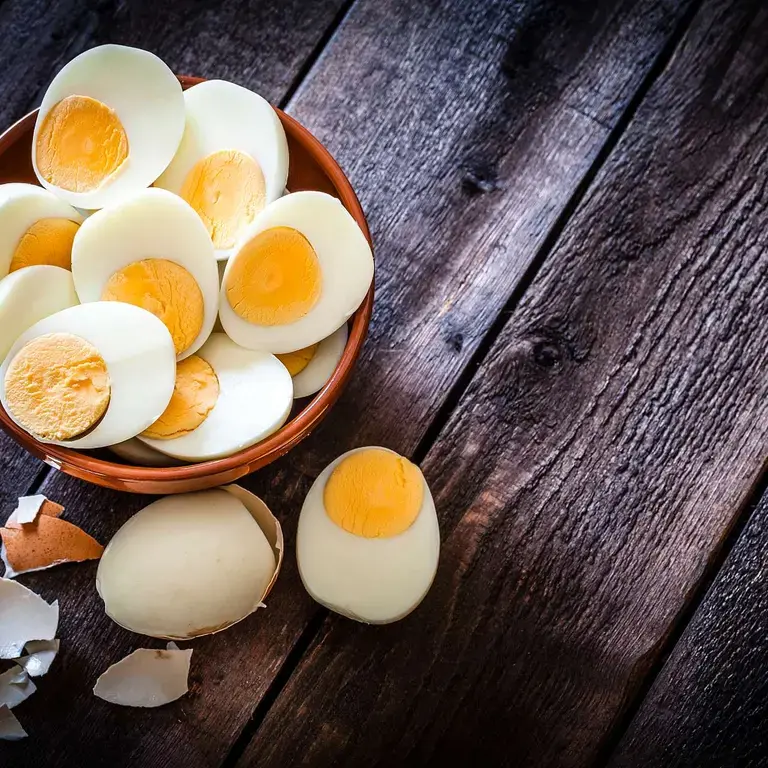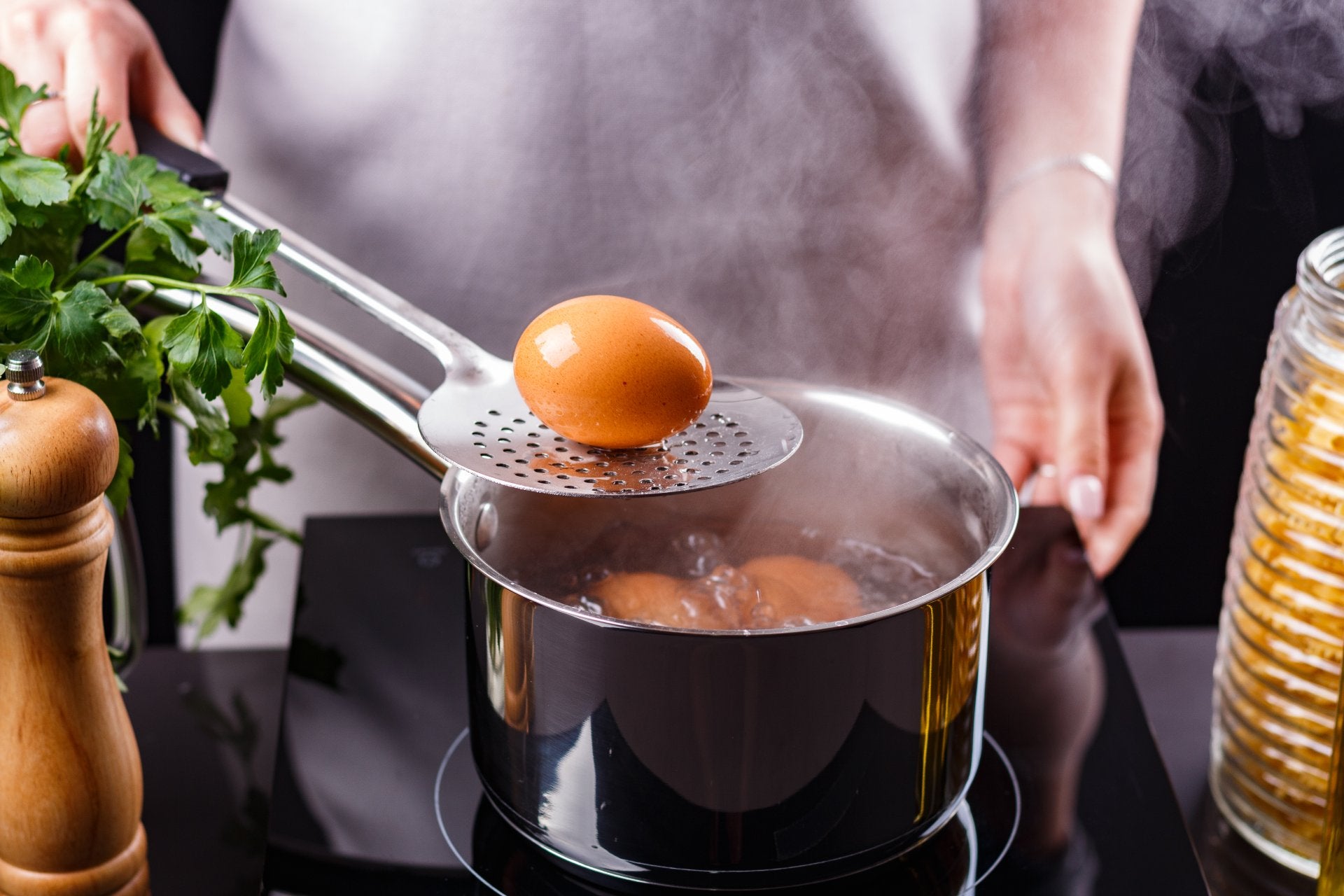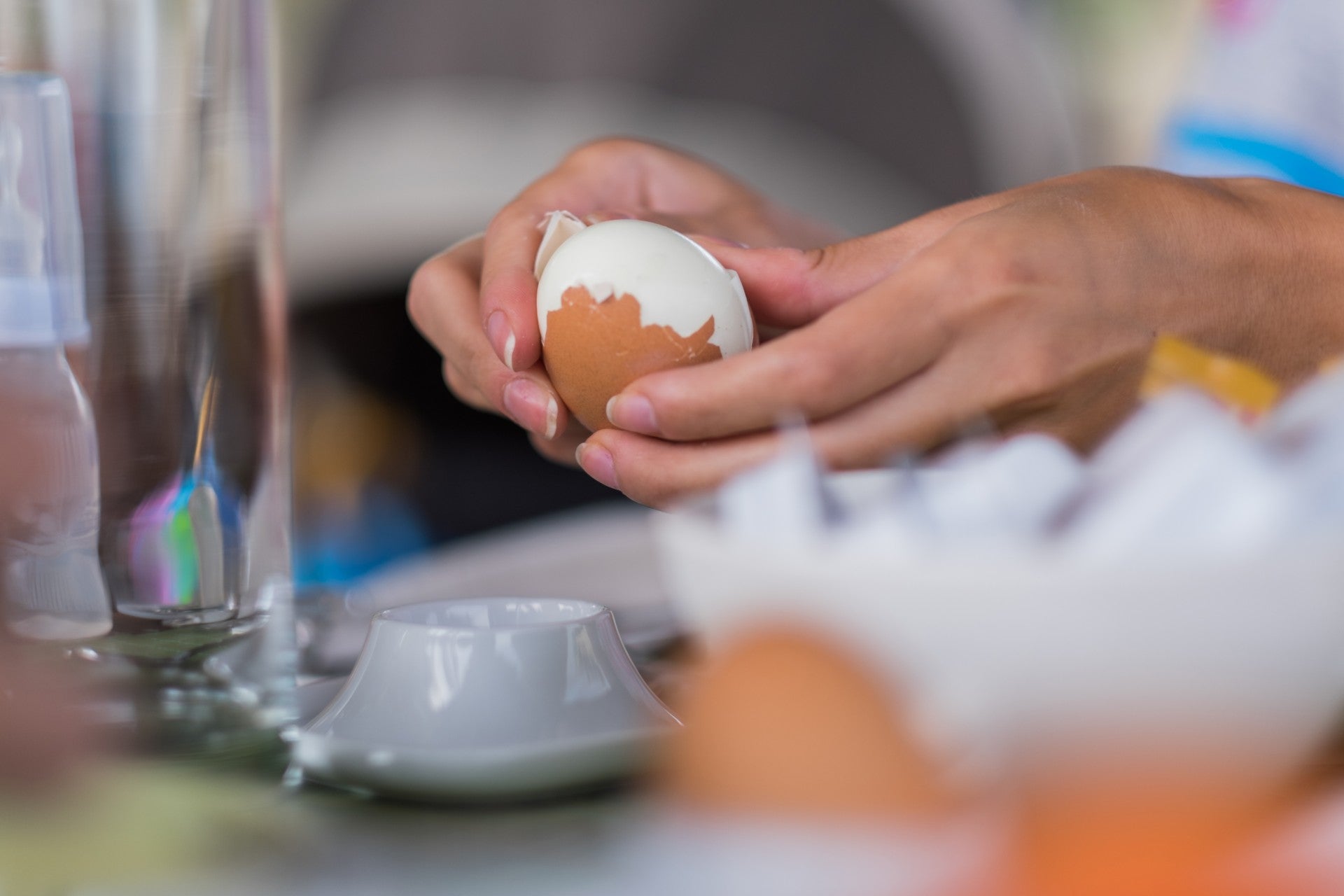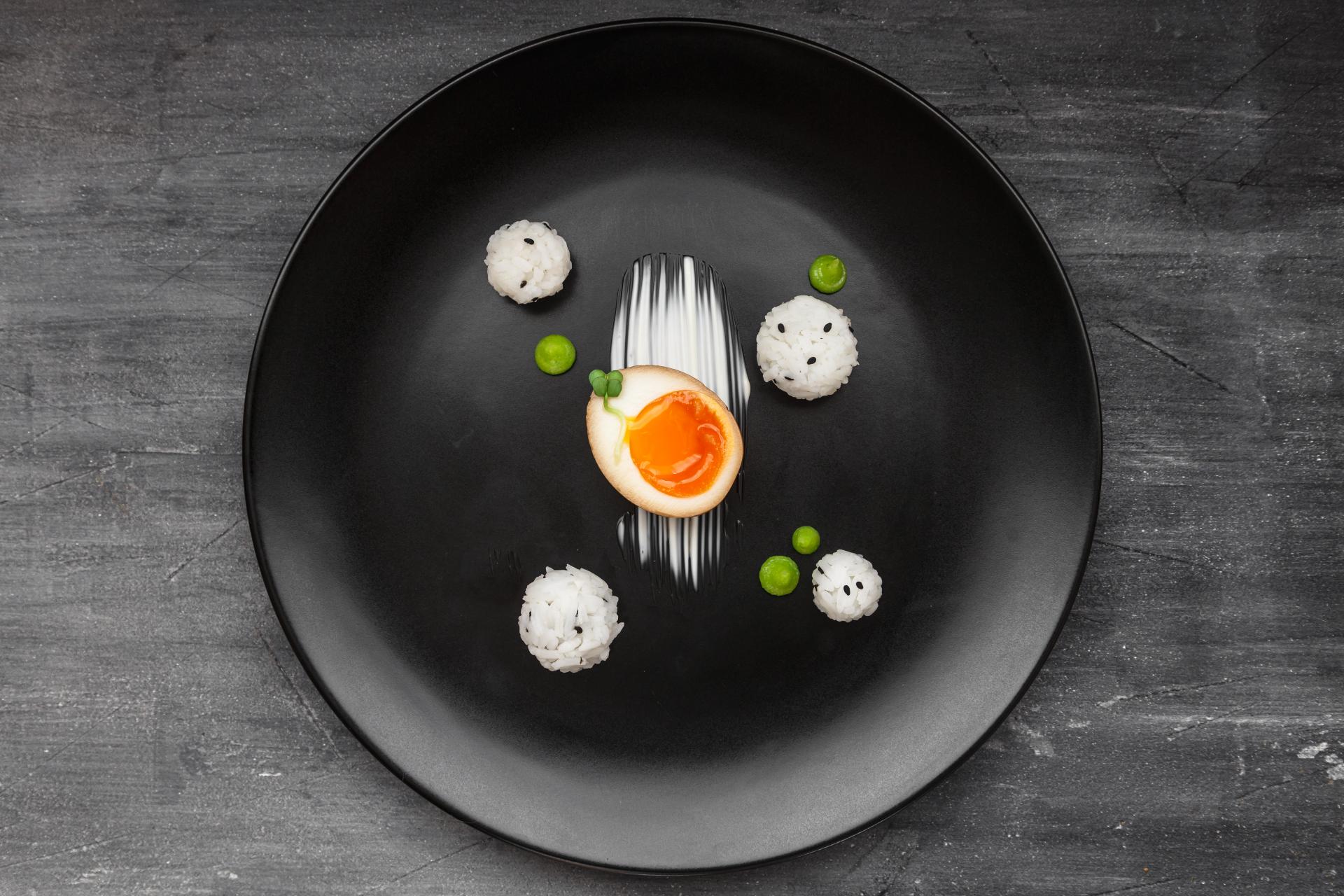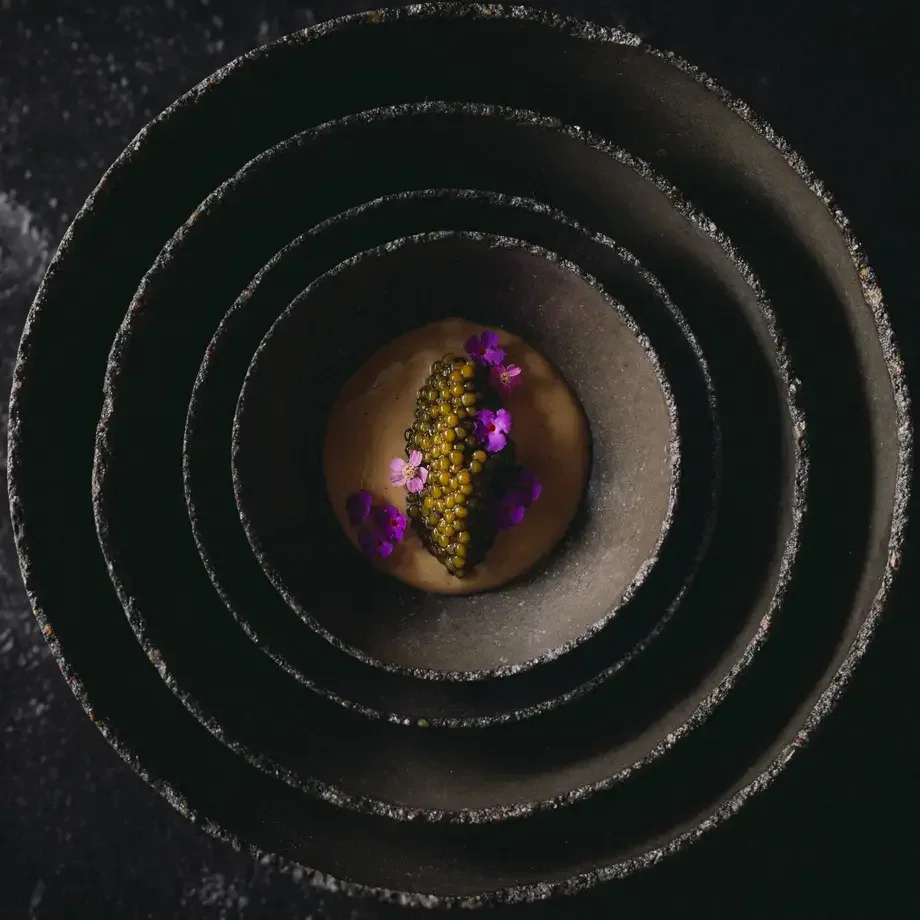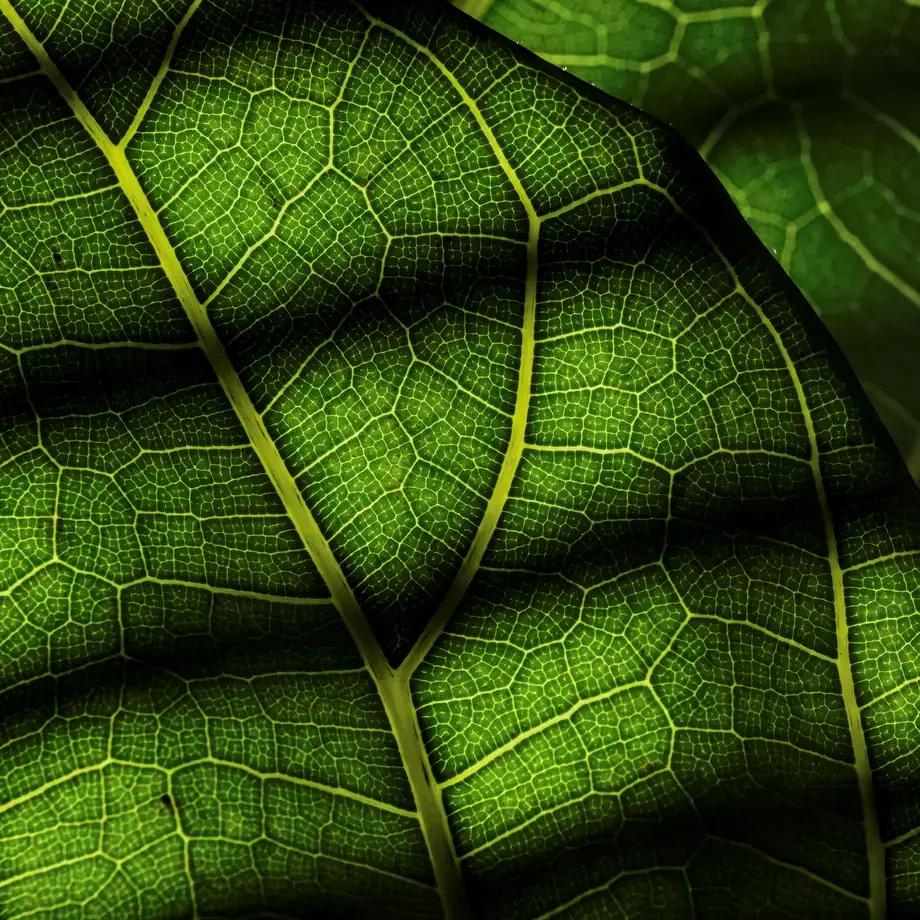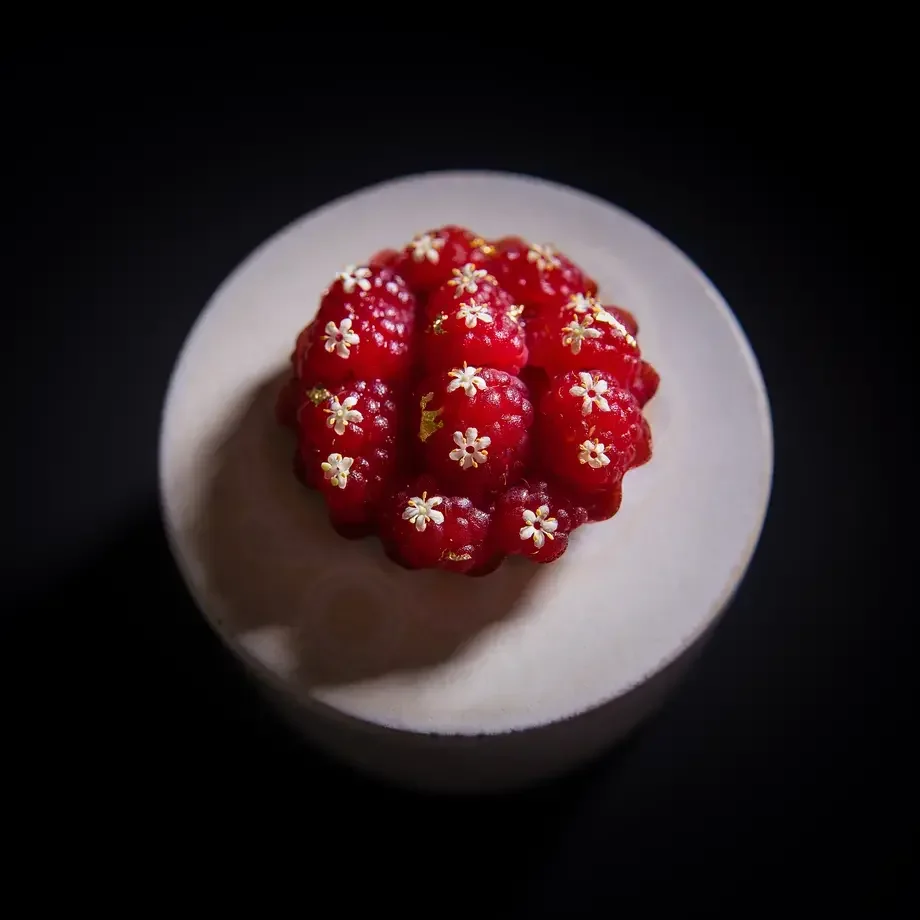One of the worst parts of cooking boiled eggs is trying to peel them. Get it wrong and you can end up with bits of shell everywhere or chunks gouged out of your egg. New eggs are the hardest of all to peel, so you can make things a little easier for yourself by buying them a few days before you want to cook them. Otherwise, there are several different techniques you can use to peel an egg - some of them time-saving, and one cool party trick.
Use a spoon:
Tap the wide end of your egg on the counter and remove a piece of shell, then take a teaspoon and slide it between the shell and the white, moving down and around the egg until the shell comes off in one piece. There is a knack to this method, and once you’ve got it, you can remove eggshells in seconds. You do run the risk of gouging chunks out of your eggs if you hold the spoon at the wrong angle, though.
Store them in water:
Place your eggs in cold water and store in the fridge for at least 1 hour. After this, the shells should be looser, and will come away easily when you try to peel them.
Crack and roll:
Tap one end of your egg against the counter to crack it, then roll it around, applying gentle pressure with the palm of your hand, until the shell is covered in cracks. This helps loosen the membrane that holds the shell to the egg, as well as providing lots of entry points for easy removal.
Peel them under water:
Take a bowl full of room-temperature water and submerge your egg, cracking one end against the side to provide an entry point. Once the water gets under the shell, it will loosen the membrane that holds the shell to the egg, and the shells should come away easily.
Blow it out:
Our last method is more of a party trick than a serious way to peel an egg, but it does look pretty cool when it works.
Tap your egg on the counter at both ends, removing a piece of shell from both the top and the bottom. Next, hold your hand around the egg and put your mouth to the top of the gap in the middle of your hand. Blow into the gap - you might have to blow quite hard - and you will hear a whistling sound as the egg detaches from its shell and drops out of the bottom of your hand.
Conservation and alternative methods
To store boiled eggs, place them in an airtight container in the refrigerator. For best results, leave the shells on, but if you’ve already peeled them, add a damp paper towel to the container to keep them from drying out, and change it daily. Your hard boiled eggs should keep for up to seven days stored in either of these ways.
If you want to try a less conventional way of making hard ‘boiled’ eggs, we’ve found some surprisingly effective alternatives:
In the oven:
This method is useful if you need to cook a lot of eggs at once, but stove space is limited. Preheat your oven to 350°F, then place 12 eggs inside the individual holes in a muffin pan to stop them rolling around. Bake for around 30 minutes, then place in a bowl of ice and water for a further 10 minutes.
In a pressure cooker:
This method cooks perfect hard boiled eggs and makes them easier to peel. Simply add two cups of water and 8 eggs to the pressure cooker, and cook for 6 minutes on a low pressure. Leave to sit for 5 minutes, then place in a bowl of ice and water to cool.
On the BBQ:
For ‘boiled’ eggs with a distinctive smoky flavour, take a look at our how-to guide to making grilled eggs on the barbecue.
Recipes
